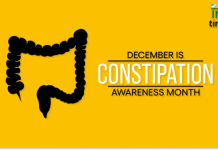
September is not just another month on the calendar; it’s a critical time for awareness and education regarding prostate cancer. Prostate Cancer Awareness Month aims to shed light on this prevalent disease affecting millions of men worldwide. By promoting awareness, encouraging early detection, and supporting those affected, we can make significant strides in the fight against prostate cancer.
Prostate cancer is the second most common cancer among men, with one in eight men receiving a diagnosis in their lifetime. With such alarming statistics, understanding the disease and its impact is crucial for prevention and treatment. This article will explore various aspects of prostate cancer, emphasizing the importance of awareness, prevention, and community support.
What is Prostate Cancer?
Prostate cancer occurs when cells in the prostate gland start to grow uncontrollably. The prostate, a small walnut-sized gland located below the bladder, plays a vital role in male reproductive health by producing seminal fluid. When cancer develops in this gland, it can lead to various health issues, ranging from localized problems to more severe complications.
Unlike some cancers that can spread rapidly, many prostate cancers grow slowly and may not cause significant health issues for years. However, early detection is crucial as aggressive forms can metastasize to other parts of the body, making treatment more complex.
Risk Factors for Prostate Cancer
Understanding the risk factors associated with prostate cancer can help in early detection and prevention. Some key risk factors include:
- Age: The likelihood of developing prostate cancer increases significantly with age. Most cases are diagnosed in men over 65.
- Family History: Having a close relative with prostate cancer can double your risk, indicating a genetic component to the disease.
- Race and Ethnicity: African American men are more likely to develop prostate cancer than men of other races. They also tend to be diagnosed at a more advanced stage.
- Lifestyle Factors: Diets high in red meat and dairy may increase the risk. Additionally, obesity and physical inactivity have been linked to a higher chance of developing prostate cancer.
Symptoms of Prostate Cancer
Many men with early-stage prostate cancer may not experience symptoms, which is why regular screening is essential. However, some signs may indicate a problem, including:
- Early Signs: Difficulty urinating, frequent urination (especially at night), or blood in urine or semen can be early indicators of prostate issues.
- Advanced Symptoms: As the cancer progresses, symptoms may include severe pelvic pain, bone pain, and unexplained weight loss. Recognizing these symptoms early can lead to timely diagnosis and treatment.
Diagnosis of Prostate Cancer
The diagnosis of prostate cancer typically involves several steps, including:
- Screening Methods: The two primary screening tests are the prostate-specific antigen (PSA) test and a digital rectal exam (DRE). Elevated PSA levels may indicate the need for further investigation.
- Biopsy Procedures: If screening results suggest cancer, a biopsy may be performed to confirm the diagnosis. During a biopsy, a small tissue sample is taken from the prostate for examination.
- Understanding PSA Levels: While PSA levels can indicate potential issues, they are not definitive. Other factors, such as age and prostate size, can influence PSA results.
Stages of Prostate Cancer
Once diagnosed, prostate cancer is staged to determine how far it has spread. The stages range from localized (Stage I) to advanced (Stage IV). Understanding the stage of the cancer is crucial for determining the appropriate treatment plan.
- Stage I: The cancer is small and confined to the prostate.
- Stage II: The cancer is larger but still localized.
- Stage III: The cancer has spread beyond the prostate to nearby tissues.
- Stage IV: The cancer has metastasized to distant parts of the body, such as bones or organs.
Treatment Options for Prostate Cancer
Treatment options for prostate cancer vary based on the stage of the disease, the patient’s overall health, and personal preferences. Common treatments include:
- Active Surveillance: For men with low-risk, slow-growing cancer, doctors may recommend monitoring the condition without immediate treatment.
- Surgery: A radical prostatectomy involves removing the prostate gland and some surrounding tissue. This option is often considered for localized cancer.
- Radiation Therapy: This treatment uses high-energy rays to kill cancer cells. It can be external or internal (brachytherapy).
- Hormone Therapy: Since prostate cancer cells often rely on testosterone to grow, hormone therapy can help reduce testosterone levels and slow cancer growth.
- Chemotherapy: Used primarily for advanced prostate cancer, chemotherapy involves using drugs to kill rapidly dividing cancer cells.
Living with Prostate Cancer
Being diagnosed with prostate cancer can be overwhelming, not just for the patient but also for their families. Emotional and psychological support is crucial. Many organizations offer resources, including support groups and counseling services, to help individuals navigate this challenging journey.
Prostate Cancer Awareness Month Activities
Throughout September, various activities aim to raise awareness about prostate cancer. These may include:
- Events and Campaigns: Local communities often hold walks, runs, and health fairs to educate people about prostate cancer.
- Educational Resources Available: Websites, brochures, and online seminars are excellent resources for learning more about prostate cancer prevention and treatment options.
How to Get Involved
There are numerous ways to support prostate cancer awareness:
- Volunteering and Fundraising: Participating in or organizing events can raise funds for research and support programs.
- Advocacy and Spreading Awareness: Sharing information on social media or within your community can help reach those who may be at risk or unaware of the disease.
Preventive Measures
While there’s no guaranteed way to prevent prostate cancer, certain lifestyle changes may reduce risk:
- Healthy Lifestyle Choices: A balanced diet rich in fruits, vegetables, and whole grains can promote overall health. Regular physical activity is also beneficial.
- Regular Check-ups and Screenings: Early detection is crucial, so regular visits to the healthcare provider for prostate health assessments are recommended, especially for those at higher risk.
Conclusion
Prostate Cancer Awareness Month serves as a vital reminder of the importance of education, early detection, and community support in the fight against prostate cancer. By understanding the disease, recognizing risk factors, and participating in awareness activities, we can make a meaningful impact.
Let’s work together to spread the word about prostate cancer, advocate for research funding, and provide support for those affected. Awareness can lead to early detection, better treatment outcomes, and ultimately, lives saved.
FAQs
What is the significance of Prostate Cancer Awareness Month?
Prostate Cancer Awareness Month raises awareness about prostate cancer, encourages early detection through screenings, and promotes education on risk factors and treatment options.
How can I reduce my risk of prostate cancer?
Adopting a healthy lifestyle, including a balanced diet, regular exercise, and routine medical check-ups, can help reduce the risk of prostate cancer.
What are the common treatment options for prostate cancer?
Common treatments include active surveillance, surgery, radiation therapy, hormone therapy, and chemotherapy, depending on the stage and severity of the cancer.
When should men start getting screened for prostate cancer?
Men should discuss screening options with their healthcare provider starting at age 50, or earlier for those at higher risk due to family history or ethnicity.



































